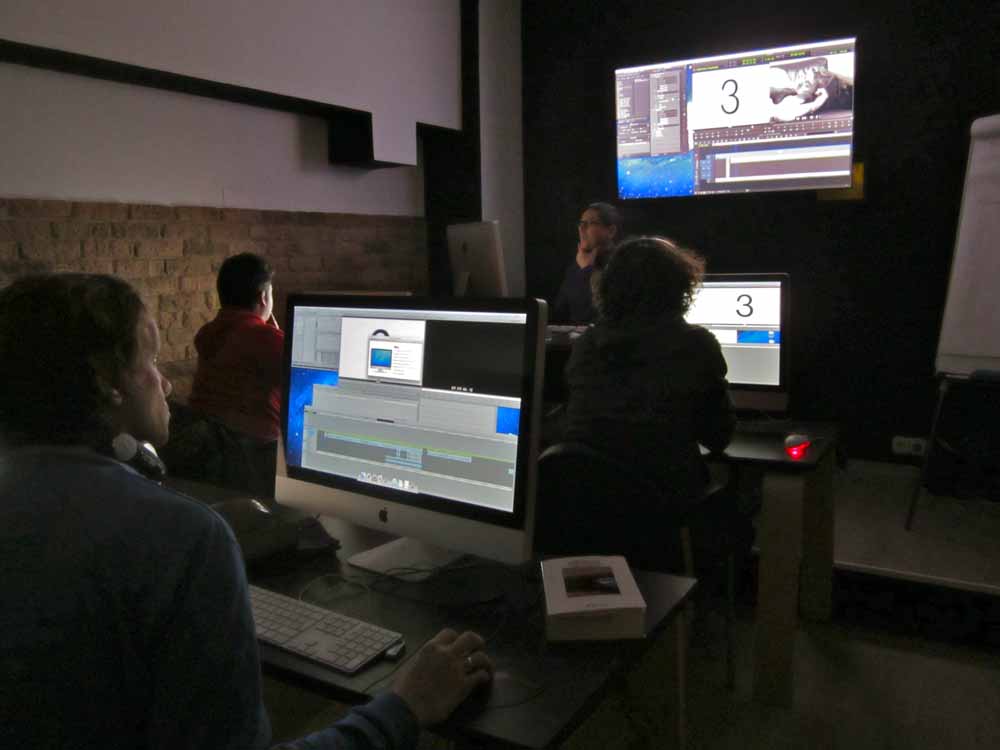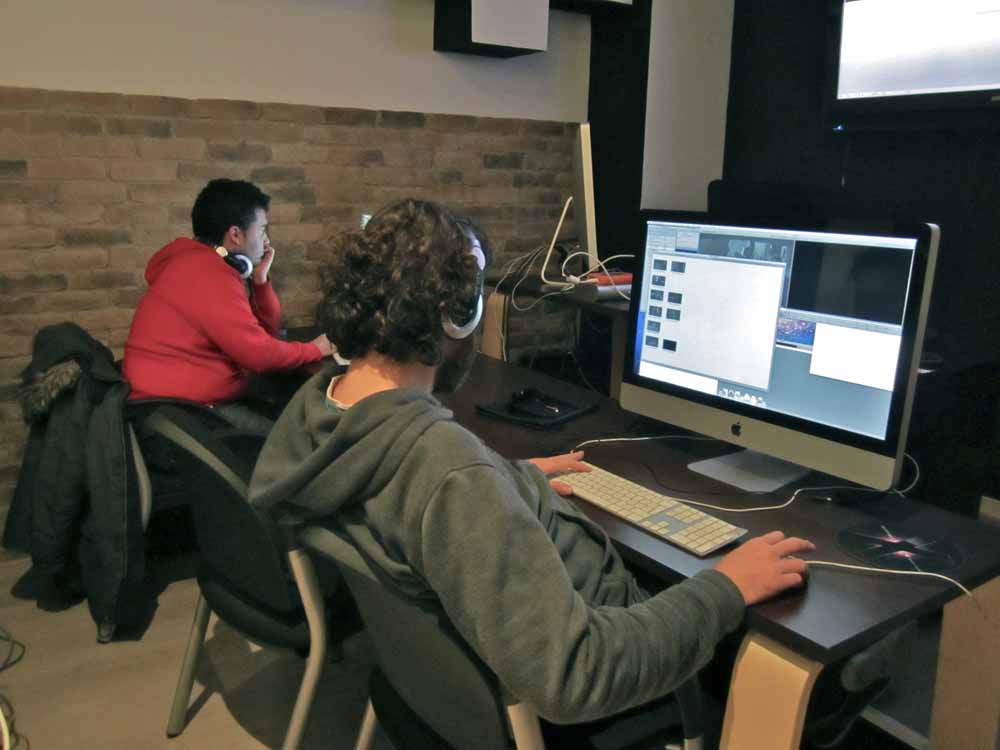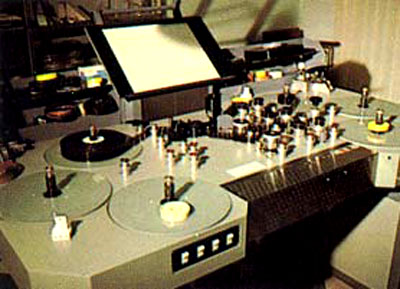Last April, between the 16th and 20th, 709 Media Room organized the course “Advanced film editing techniques”. It was given by Jaime Estrada, film and video editor with experience in fiction and documentary feature films, and also responsible for the editing department at London Film School.
The duration of the course was 20 hours spread over five mornings; however, Jaime not only had no problem, but encouraged us to come every day half an hour before and stay until an hour after finishing and take advantage to continue advancing in our practices.
One of the requirements of the course was to have basic notions of Avid Media Composer, which all attendees demonstrated, but thanks to Jaime’s great knowledge of this editing system, at any time he taught us other faster ways and shortcuts to do what we wanted and use the program more efficiently, focusing on the narrative and not on the management of the tool.
 The course was divided into three parts governed by the three practices that we carried out. We had the opportunity to work with “raw” materials from the shooting of the film “La chispa de la vida” by Alex de la Iglesia. As soon as we arrived, Jaime provided us with the necessary materials to start. The objective of the course was to acquire a working method from the beginning, to learn to make decisions regarding the material we have and to understand a series of aesthetic concepts to be able to carry out the editing. To learn this, in addition to theory, practice is more than necessary, and that is what we did from the beginning, practicing non-stop.
The course was divided into three parts governed by the three practices that we carried out. We had the opportunity to work with “raw” materials from the shooting of the film “La chispa de la vida” by Alex de la Iglesia. As soon as we arrived, Jaime provided us with the necessary materials to start. The objective of the course was to acquire a working method from the beginning, to learn to make decisions regarding the material we have and to understand a series of aesthetic concepts to be able to carry out the editing. To learn this, in addition to theory, practice is more than necessary, and that is what we did from the beginning, practicing non-stop.
The first materials we were given were in black and white, without sound and 4:3, and in their entirety constituted a short fiction film. These characteristics helped us to be able to focus only on the framing, the mise-en-scene and the structure of the story. In addition, certain shots could be confusing at some point, so it was also necessary to work to ensure that the narrative and what the characters were doing were understood at all times.
When we finished our first cut, we made an exhibition in which each one of us showed our work and Jaime gave some general guidelines and tips to improve it. So, when we got a cut we were satisfied with, he sat next to each of us and commented on the practice in a more personal way.

The second practice consisted of two scenes of a short film shot in a very personal style that had to be captured in the editing, trying not to leave any dead time. In addition, one sequence dealt with the preparation of a state of the character to reach the second sequence, which was the one that ended the short film.
Jaime advised us to support our editing with some sounds or even creating effects if this would help us to generate the feeling we wanted for these two sequences.
During the last two days we dedicated ourselves to the last practice. As for the rest, we were provided with a script, although this time we could choose between several sequences from the film La Chispa de la Vida (The Spark of Life) by director Alex de la Iglesia. Due to the type of production it was, there were many more possibilities that forced us to make a series of decisions quickly in order to finish in the established time.
Although there were several sequences of different types (with dialogue, action, in which we could go more towards a genre), practically all of us chose the same one, probably due to its complexity and the difficulty to work on such a sequence usually. However, each one of us approached it in a particular way and played with different elements to emphasize the mise-en-scene or the types of shots.
 For this last practice we had Jaime’s help at all times, as he sat down table by table to help us with our problems and ask us what our vision of the scene was.
For this last practice we had Jaime’s help at all times, as he sat down table by table to help us with our problems and ask us what our vision of the scene was.
At the end, we chose a practice to present and comments were made by Jaime and the rest of the attendees.
During the export time Jaime took the opportunity to explain part of the theory to be able to take into account certain frames, or make flashbacks or ellipses without the need to resort to color changes or typical transitions; using examples of films for this purpose.
One of the most interesting aspects of the course is to have the opportunity to practice with very different materials and, in addition, to have them evaluated cut by cut by a professional with a great experience, in a totally personal way. That’s why I think this is a totally necessary course if you want to go deeper into narrative editing techniques, since it’s not only about knowing how to handle a system like Avid or Final Cut and knowing a few codecs; you also, and mainly, have to take into account many narrative issues that help us to move the story forward.
https://vimeo.com/43222408

